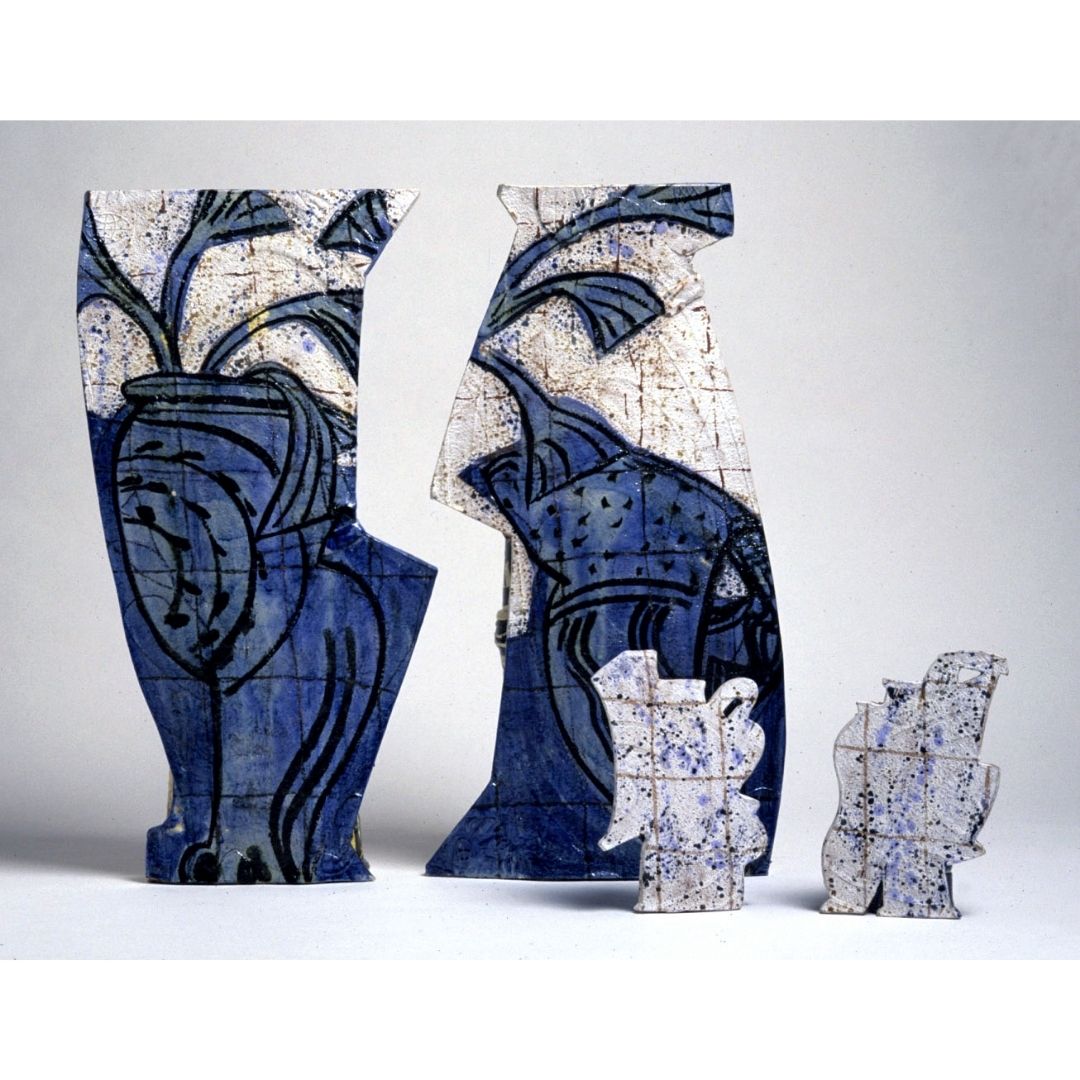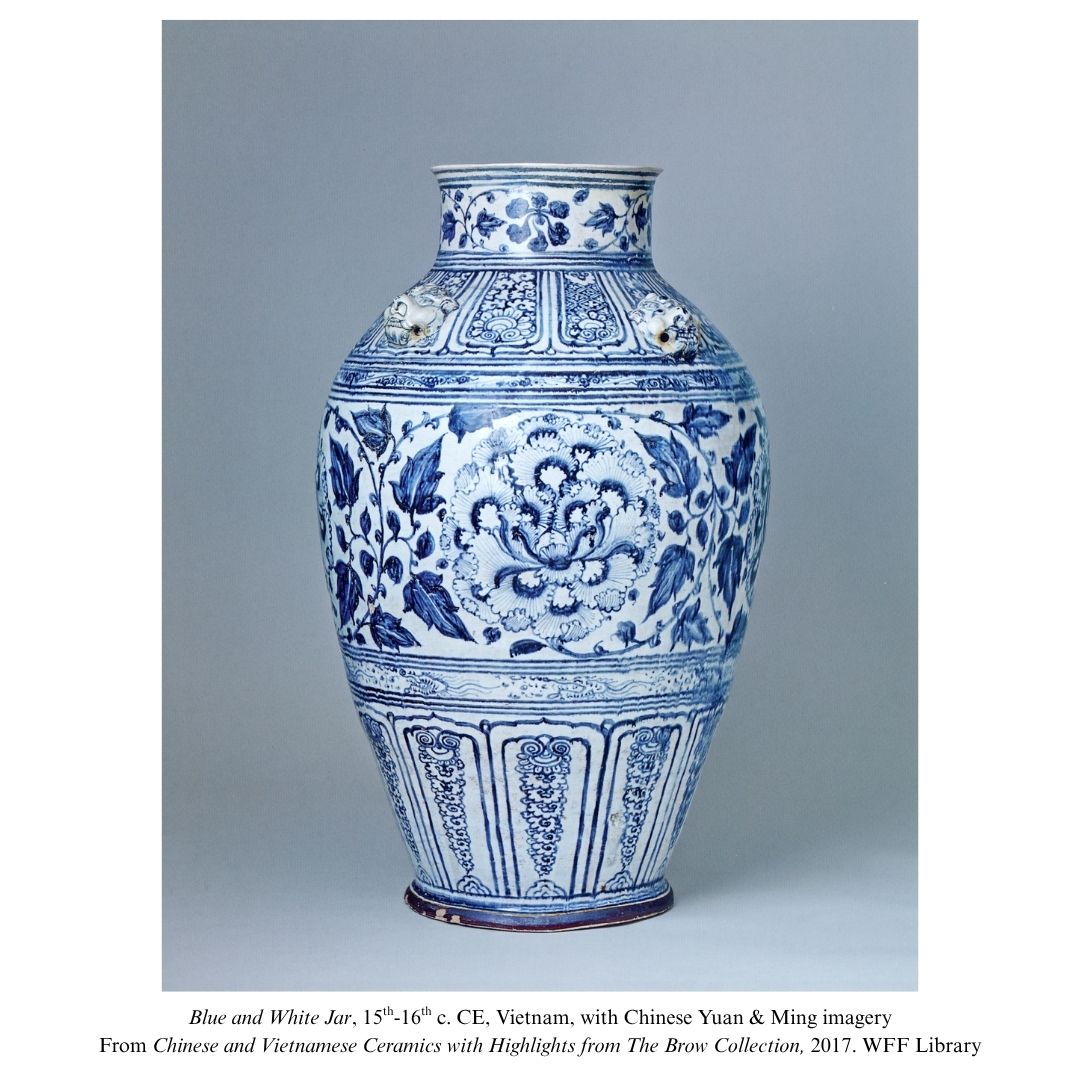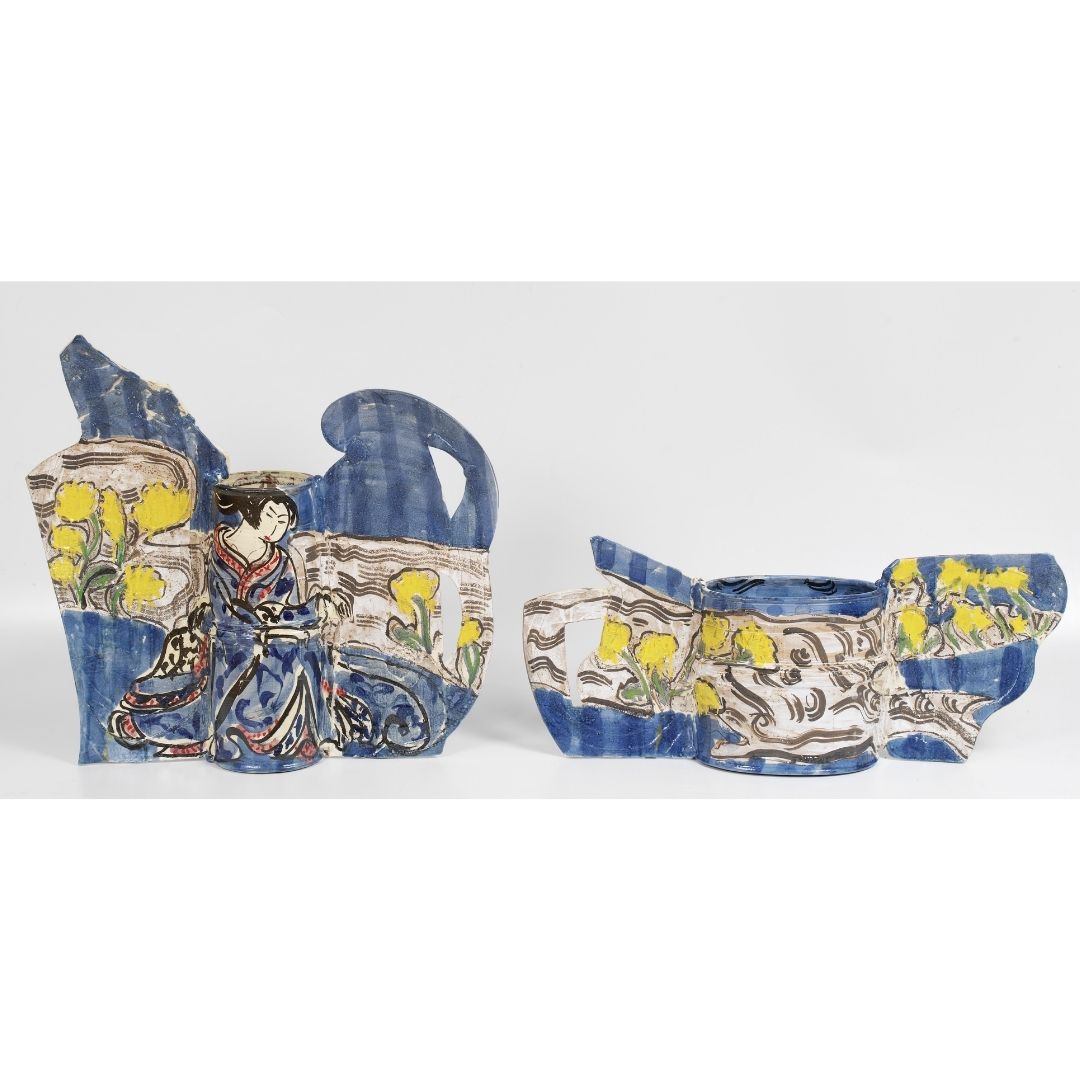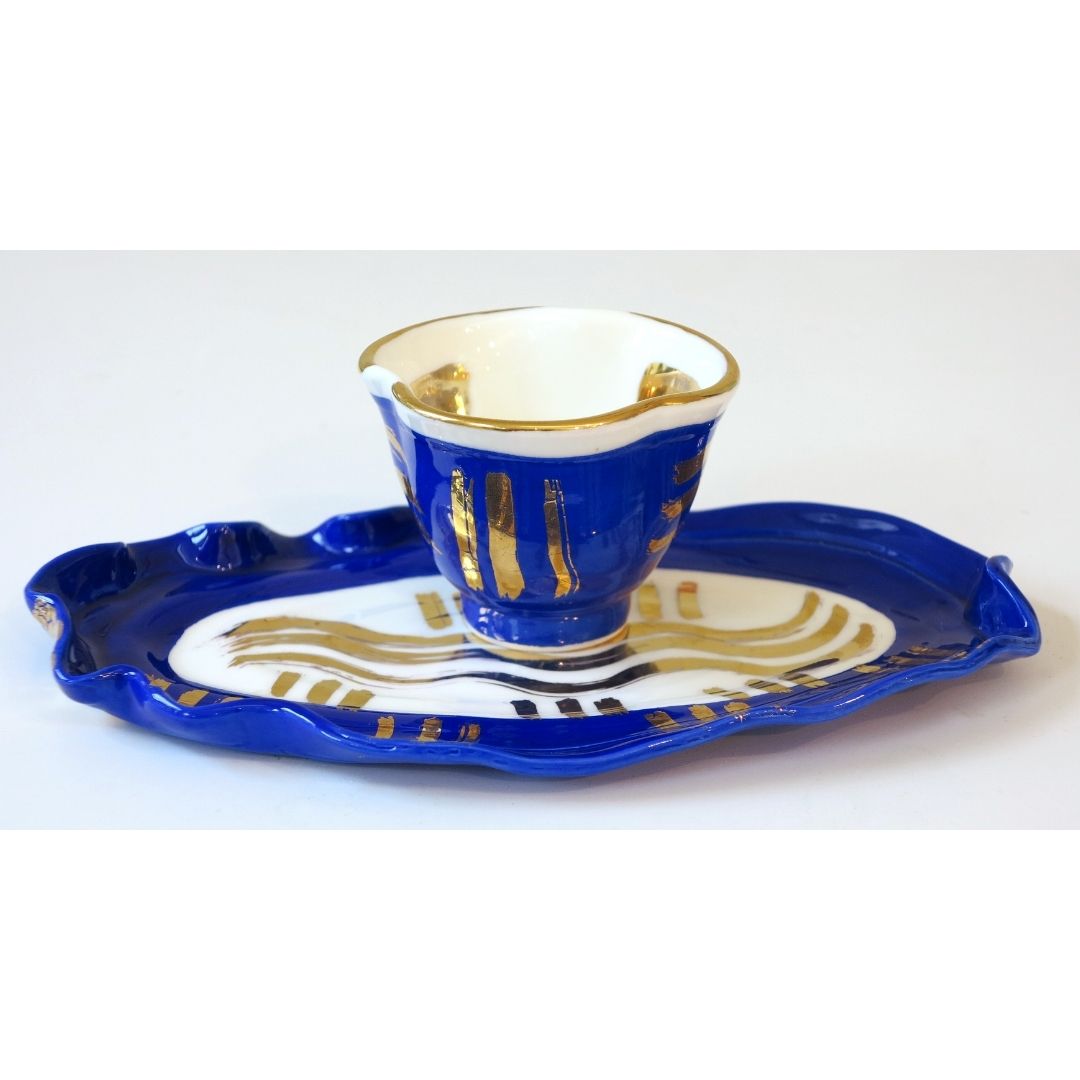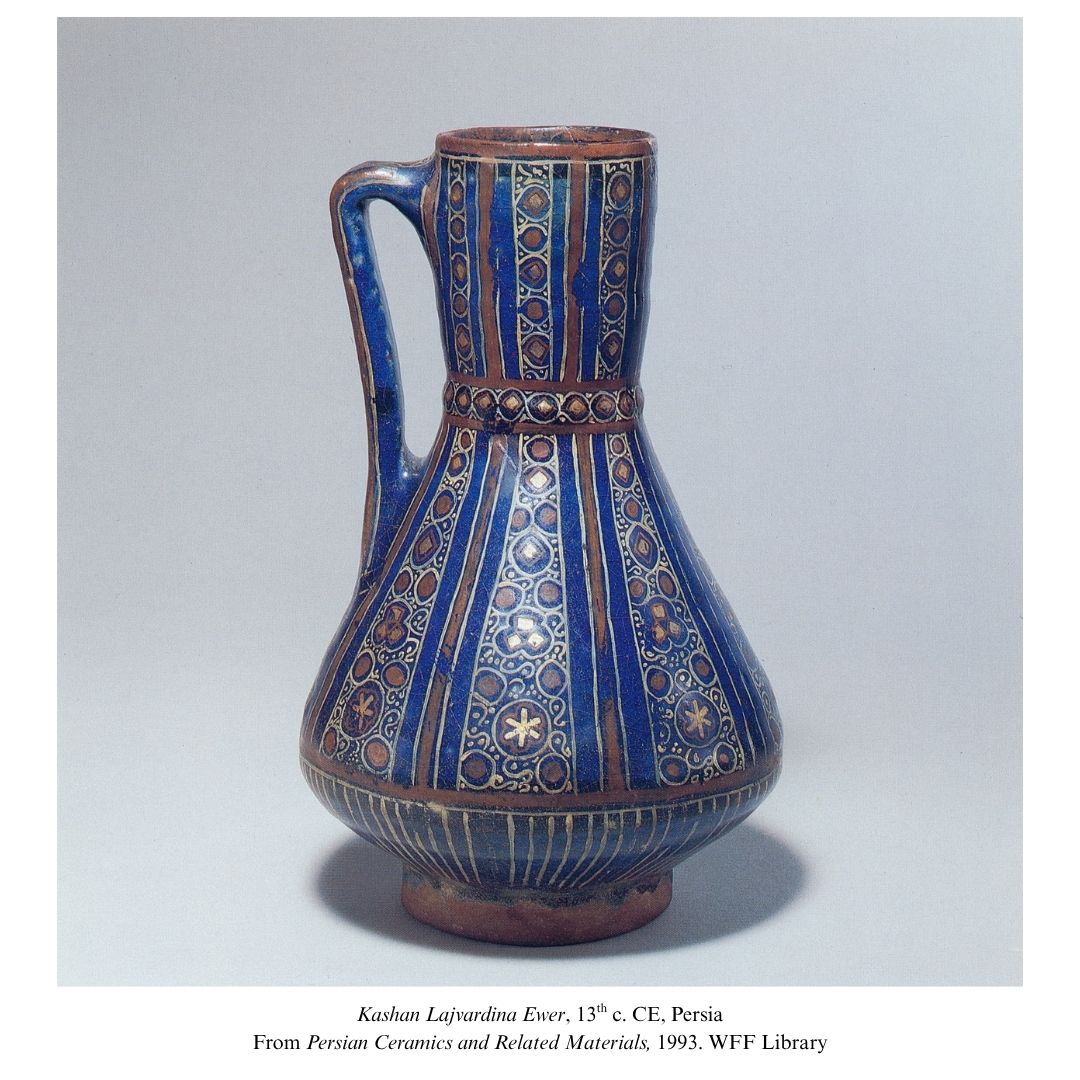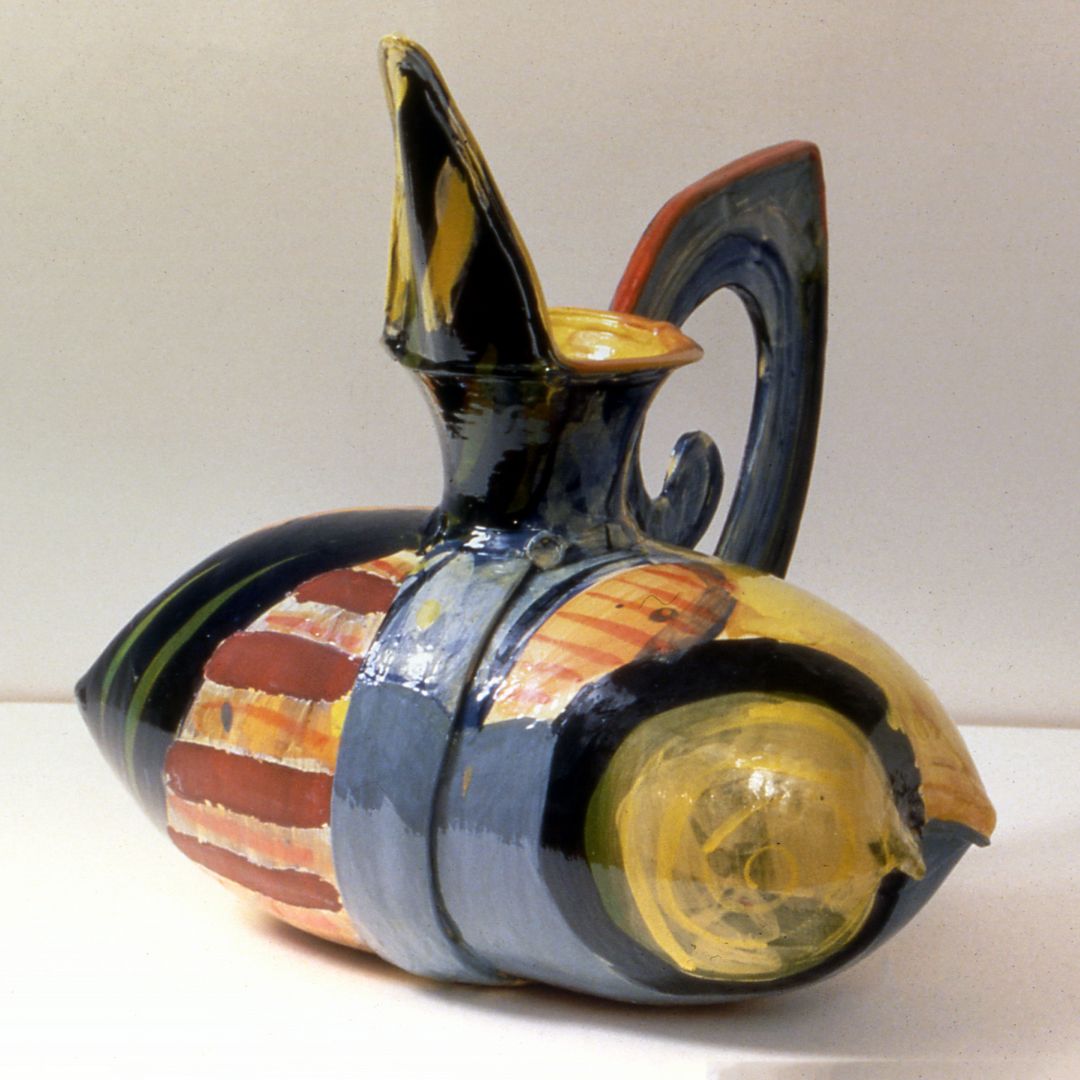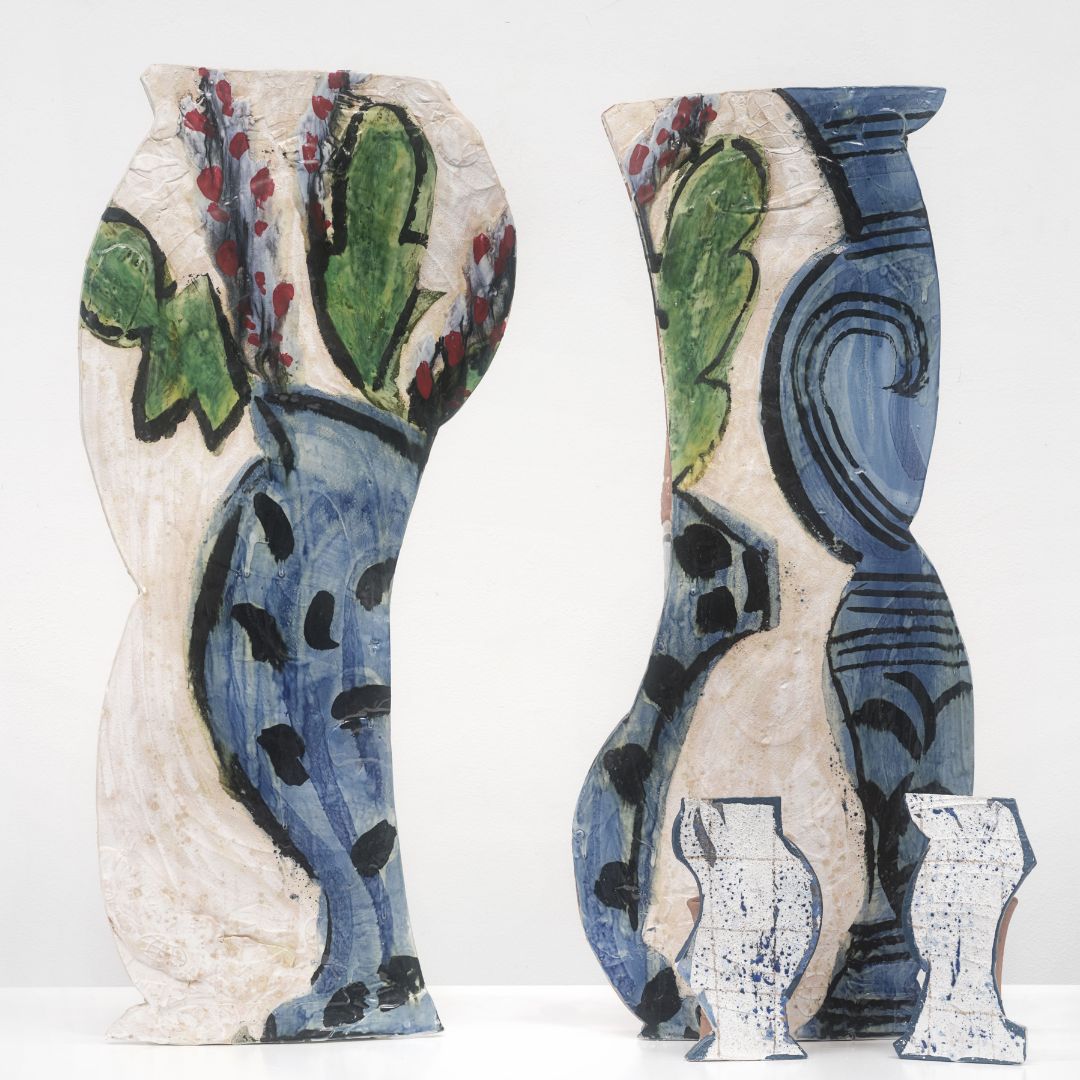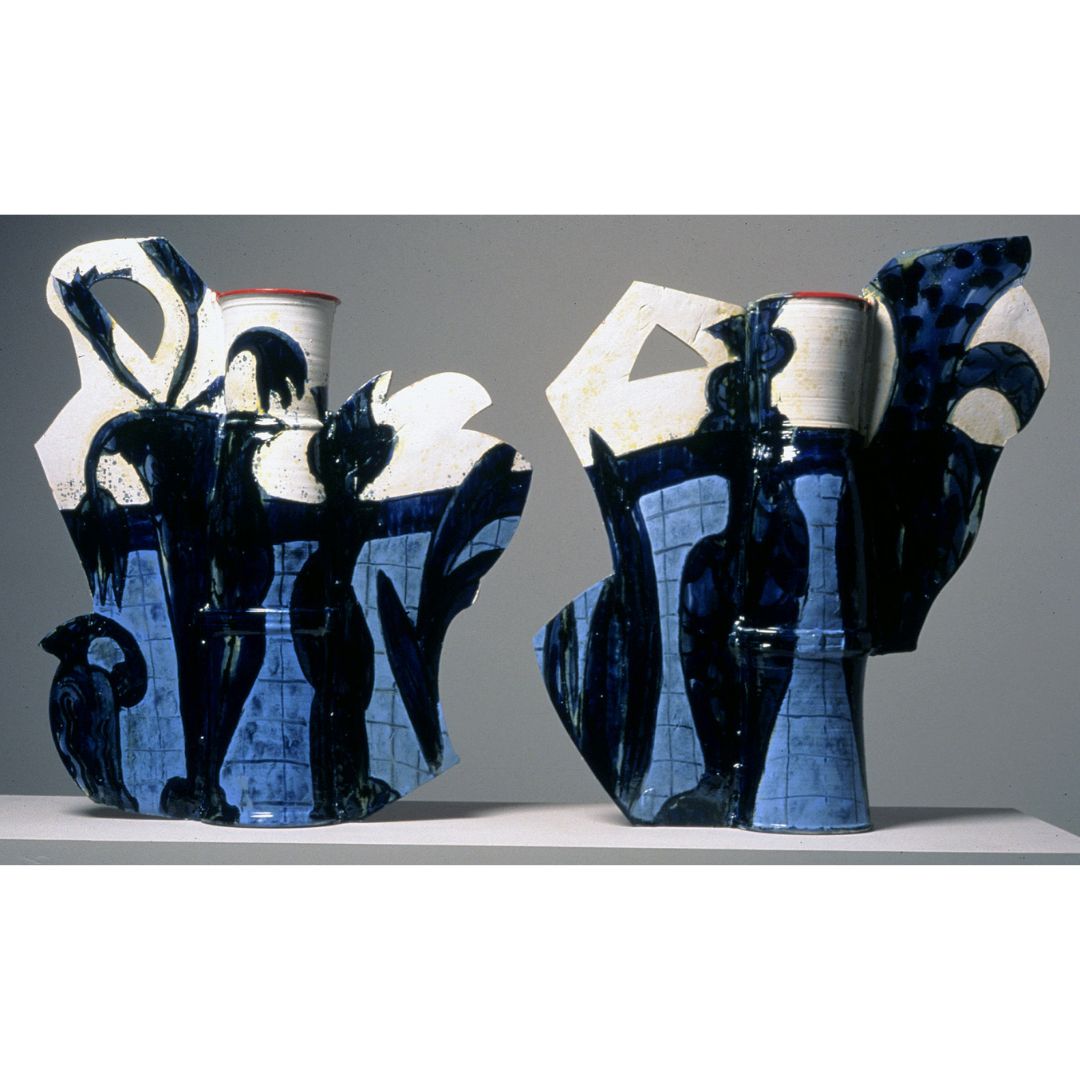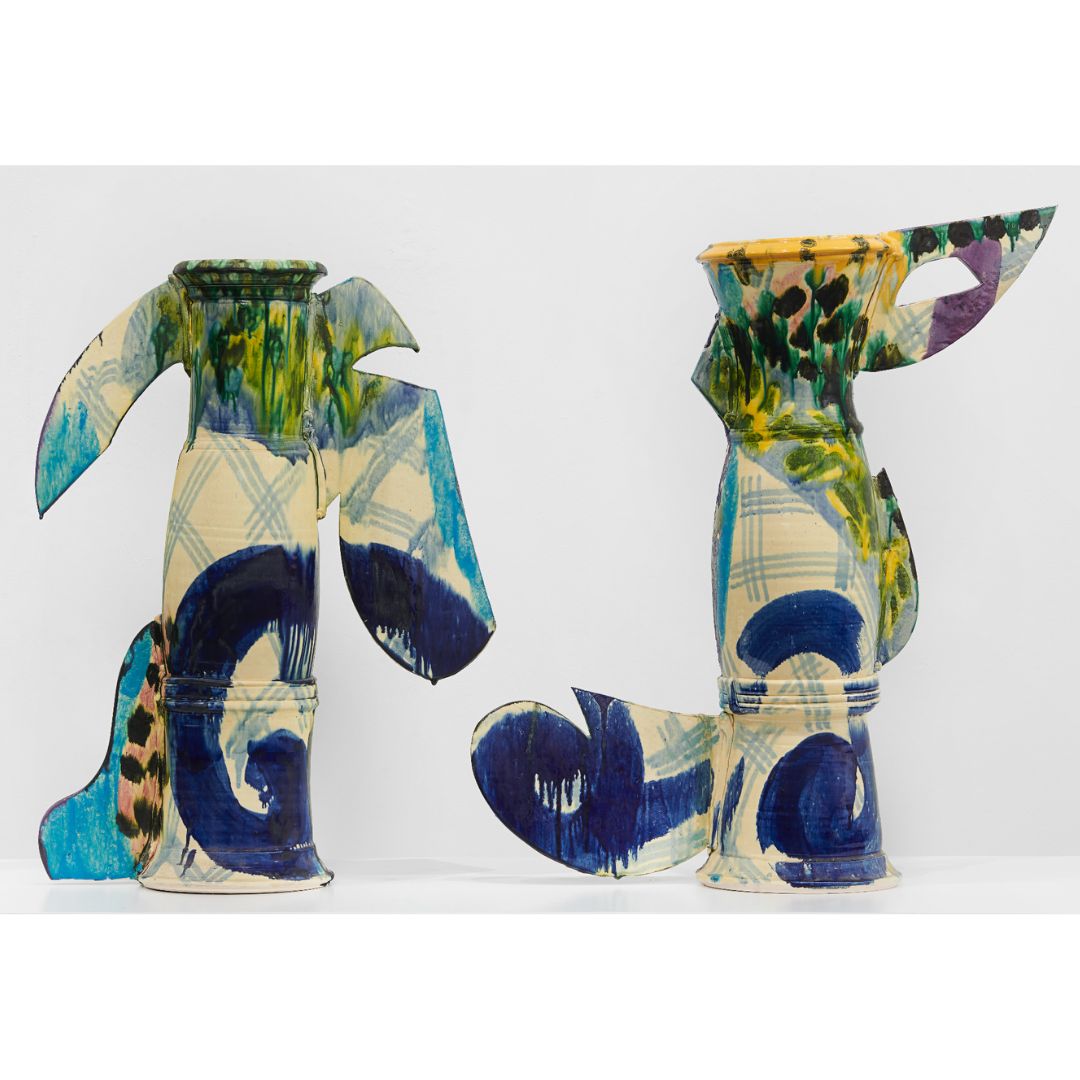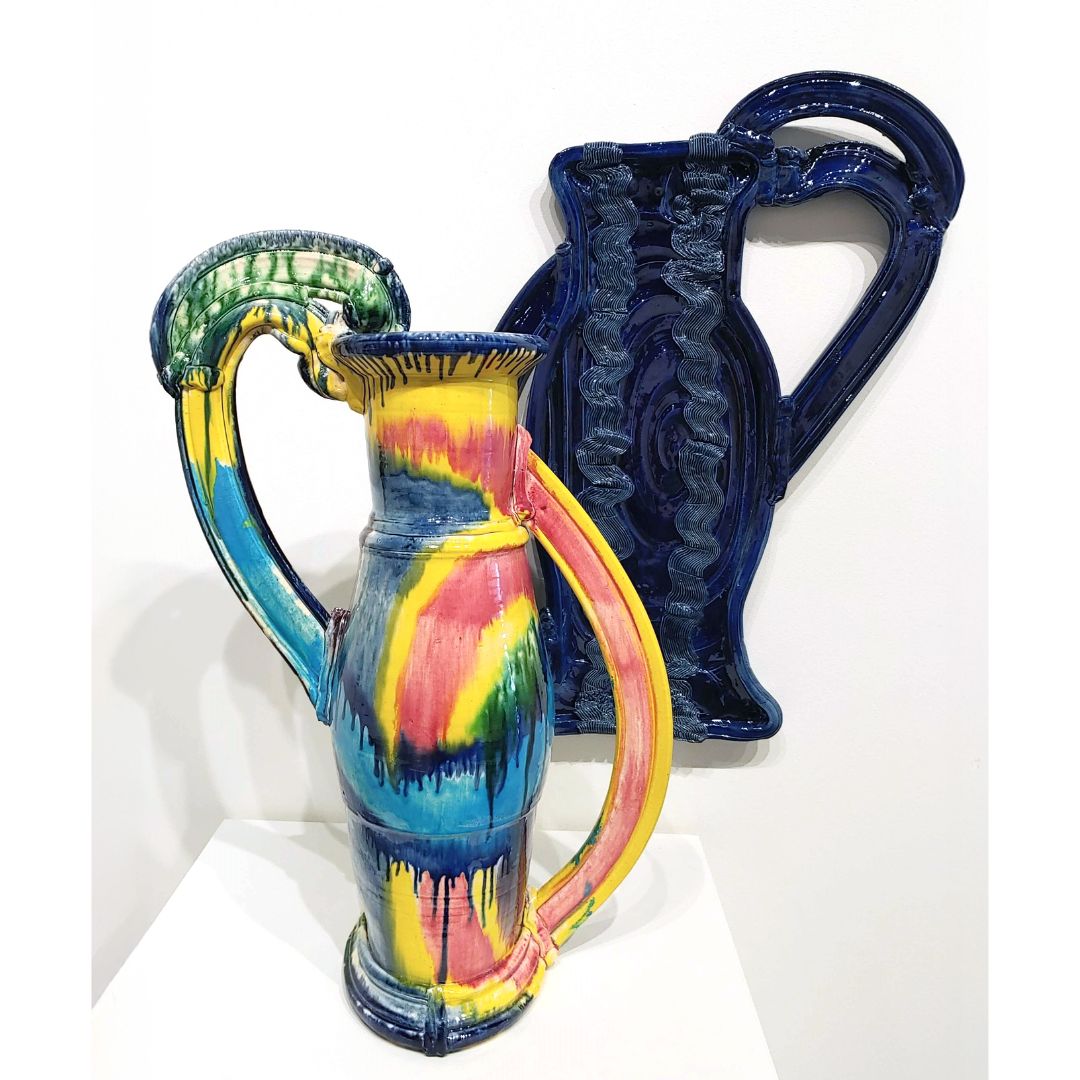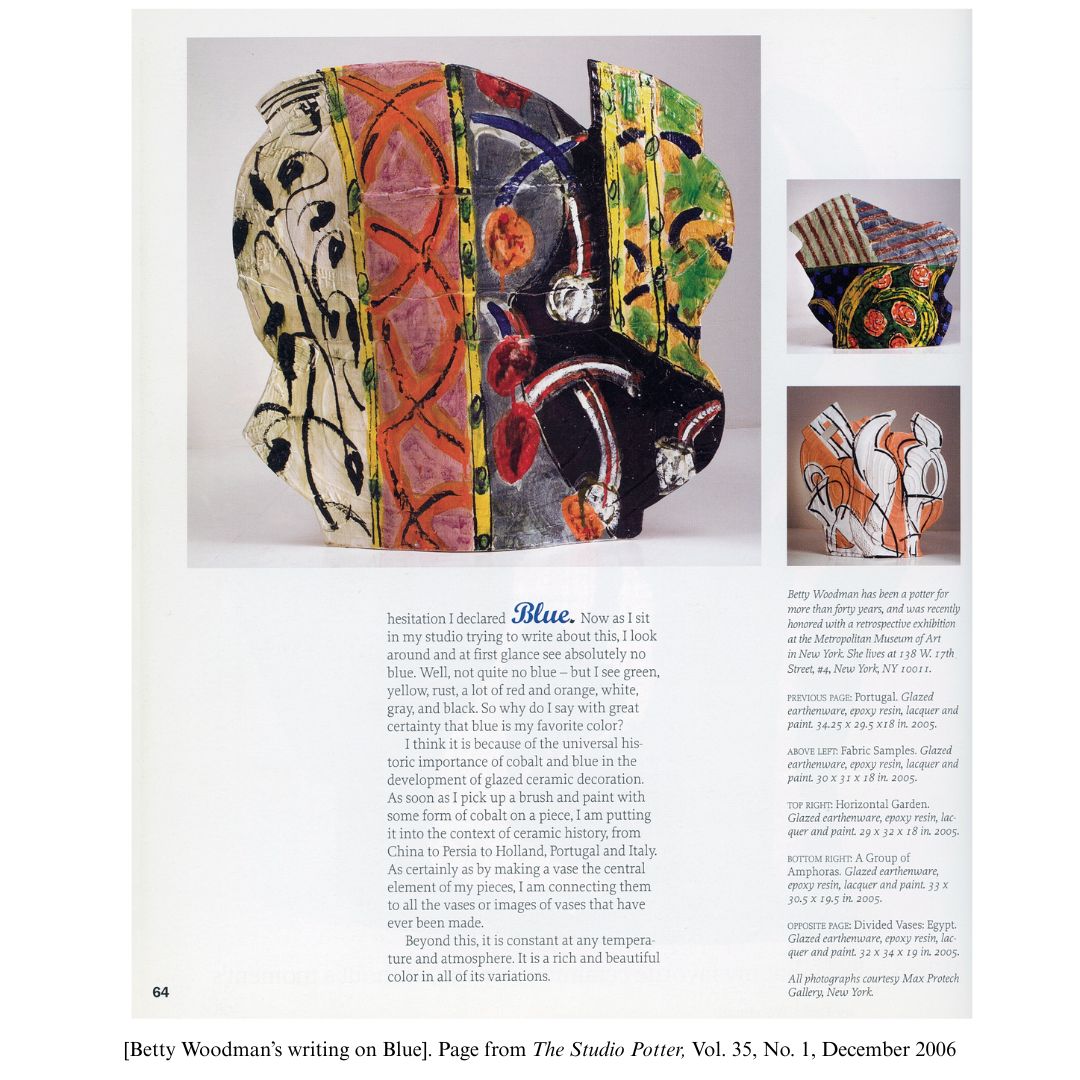Betty Woodman's favorite ceramic color, blue, and her body of work
![L to R: 1: “Azulejas - Oribe Memory,” 2003, 34 x 68 x 9 in. | 2: Portuguese Tile Vases & Their Audience,” 2001, approx. 35 x 38 x 8 in. | 3: Azulejaria barroca portuguesa: Figuras de convite” by Luísa Arruda, 1993; “Waves of influence: cinco séculos do azulejo português” by Olivia Georgia, 1995; “Caminho do oriente: Guia do azulejo” by Luísa Arruda, 1998; “Azulejaria portuguesa” by José Meco, 1985 | 4: “Portuguese Vases,” 2005, 17 x 87 x 7 in. | 5: “Chinese and Vietnamese Ceramics with Highlights from The Brow Collection.” Published by Zetterquist Galleries, 2017 | 6: “The Ming Sisters,” 2003, 32 x 81 x 8 in. | 7: “Blue Girl,” 2005, 30 x 70 x 9 in. | 8: “Untitled #15 [Study for Edition by Sèvres, Blue],” 2011/2012, 2 1/2 x 8 x 4 1/2 in. | 9: “Persian Pillow Pitcher No. 6,” 1981 | 10: “Persian Ceramics and Related Materials” by Eric J. Zetterquist, 1993 | 11: “Pillow Pitcher: Delft,” 1996, 24 x 26 x 23 in. | 12: “Divided Vases: Classic Vases - Observed,” 2002, 30 x 29 x 10 1/2 in. | 13: “Baroque Diptych,” 2001, 36 x 63 x 8 in. | 14: “Kimono Vases: October,” 1990, 30 3/4 x 43 x 9 1/2 in. | 15: “Vase and Shadow: Spiral Vase with Blue Shadow,” c. 1980s, 29 x 21 x 2 in. | 16: Page from “The Studio Potter,” Vol. 35, No. 1, December 2006. Works by Betty Woodman © Woodman Family Foundation / Artists Rights Society (ARS), New York](https://cdn.prod.website-files.com/5d8073c5ddf5281c25cdcc3e/68878625f554a02c3cfb1aea_1.jpg)
Betty Woodman is known for her exuberant body of work, which is often bathed in vivid hues of yellow, fuchsia, red, and orange. Yet in the December 2006 issue of The Studio Potter devoted solely to color, she confessed—“without a moment’s hesitation”—that blue was her favorite. Woodman reflected: “I think it is because of the universal historic importance of cobalt and blue in the development of glazed ceramic decoration.” Throughout her career, Woodman made many deliberate references to Portuguese azulejo tiles, Chinese blue-and-white porcelain, Persian cobalt ceramics, French soft-paste porcelain, Japanese Oribe, and Dutch Delftware, among others—integrating these diverse ceramic traditions into her own sculptural forms. With each reference to cobalt, Woodman consciously positioned her work and herself within the rich lineage of global ceramic history that she both inherited and helped reshape: “As soon as I pick up a brush and paint with some form of cobalt on a piece, I am putting it into the context of ceramic history, from China to Persia to Holland, Portugal and Italy. As certainly as by making a vase the central element of my pieces, I am connecting them to all the vases or images of vases that have ever been made.”


